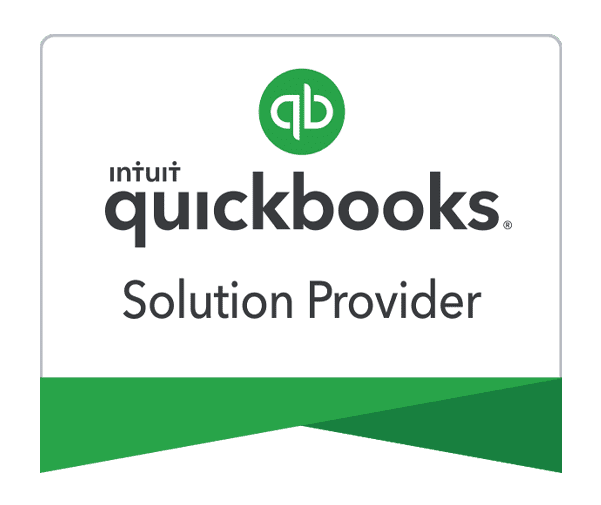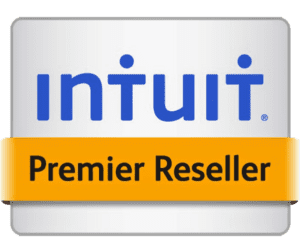How Does QuickBooks Payment Integration Work?

Paygration, Inc.
Businesses are constantly seeking ways to streamline their operations and improve efficiency. QuickBooks payment integration offers a seamless solution for businesses looking to simplify their payment processes, streamline accounting tasks, and enhance financial visibility. Let’s learn more about QuickBooks payment integration, delve into its functionality, and uncover the benefits it offers for businesses of all sizes.
QuickBooks Payment Integration Overview
QuickBooks payment integration is the process of connecting QuickBooks accounting software with payment processing systems to facilitate seamless payment acceptance, invoice creation, and financial reconciliation. This integration enables businesses to streamline their payment workflows, automate accounting tasks, and gain real-time insights into their financial health.
QuickBooks payment integration allows businesses to accept various forms of payment, including credit cards, debit cards, ACH transfers, and electronic checks, directly within the QuickBooks environment. Payments are securely processed, recorded, and reconciled, eliminating the need for manual data entry and reducing errors.
How Does QuickBooks Payment Integration Work?
The process of QuickBooks payment integration involves several key steps:
- Integration Setup: Businesses connect their QuickBooks account with a compatible payment processing system or gateway.
- Payment Collection: Customers make payments using their preferred payment method, such as credit cards or bank transfers.
- Automatic Recording: Payment data is automatically recorded in QuickBooks, including invoice creation, payment reconciliation, and updating of financial records.
- Real-time Syncing: Payment information is synced in real-time between QuickBooks and the payment processing system, ensuring accuracy and visibility into financial transactions.
Optimizing Payment Workflows with QuickBooks Integration
Integrating QuickBooks with payment processing systems offers businesses a multitude of benefits, revolutionizing their payment workflows and enhancing financial management capabilities. Let’s explore how QuickBooks payment integration optimizes payment processes and drives efficiency for businesses of all sizes.
Integrating payment solutions with QuickBooks offers businesses several advantages, streamlining operations and enhancing efficiency. Here are seven compelling reasons to consider QuickBooks Payment Integration.
Streamlined Invoicing and Payments
QuickBooks payment Integration simplifies the invoicing process by allowing businesses to create and send invoices directly from within QuickBooks. This seamless integration means that once an invoice is generated, it can be sent to customers with an embedded payment link, making it easy for customers to pay directly online. This not only speeds up the payment process but also reduces the administrative burden associated with tracking outstanding invoices and manually processing payments.
Moreover, payment integration automates the reconciliation process. Payments received are automatically matched with the corresponding invoices in QuickBooks, ensuring accurate financial records and reducing the risk of errors. This streamlined approach to invoicing and payments helps businesses maintain better cash flow and reduces the time spent on manual data entry and reconciliation tasks.
Faster Payment Processing
By integrating payment solutions with QuickBooks, businesses can significantly speed up the payment processing cycle. Customers can pay invoices instantly using various payment methods, including credit cards, debit cards, and ACH bank transfers. This flexibility in payment options ensures that customers can choose their preferred method, which can lead to quicker payments and improved cash flow for the business.
In addition to faster payments, integrating QuickBooks with a powerful payment gateway provides real-time updates on payment status. Business owners can easily track which invoices have been paid and which are still outstanding. This visibility allows for better financial planning and management, as well as timely follow-up on overdue payments, further enhancing the efficiency of the payment collection process.
Enhanced Customer Experience
Integrating payment solutions with QuickBooks enhances the customer experience by offering convenient and secure payment options. Customers appreciate the ease of paying invoices online through a secure payment portal, which can be accessed directly from the invoice. This convenience can improve customer satisfaction and encourage timely payments, as customers are more likely to pay promptly when the process is straightforward and hassle-free.
Furthermore, QuickBooks payment integration supports automated reminders for outstanding invoices. These reminders can be customized and scheduled to be sent automatically, reducing the need for manual follow-ups. Automated reminders not only save time for the business but also provide a professional and consistent approach to managing receivables, ultimately leading to better customer relationships and improved payment timeliness.
Improved Cash Flow Management
Effective cash flow management is crucial for the success of any business. Integrated payment gateways help businesses manage their cash flow more effectively by providing real-time insights into payment status and outstanding receivables. With immediate updates on payments received, businesses can make informed decisions about expenditures, investments, and other financial commitments.
Additionally, the integration offers tools for forecasting cash flow based on historical payment patterns and current outstanding invoices. This predictive capability allows businesses to anticipate potential cash flow issues and take proactive measures to address them. By improving cash flow visibility and management, QuickBooks Payment Integration helps businesses maintain financial stability and support growth initiatives.
Reduced Administrative Work
Manual processing of invoices and payments can be time-consuming and prone to errors. When you integrate QuickBooks with a solid payment gateway, you’ll be able to reduce the administrative workload by automating many of these tasks. Invoices can be created, sent, and tracked within QuickBooks, and payments can be processed and reconciled automatically. This automation frees up valuable time for business owners and their staff, allowing them to focus on more strategic activities.
Moreover, reducing manual data entry minimizes the risk of errors, which can lead to costly discrepancies and time-consuming corrections. Automated processes ensure that financial records are accurate and up-to-date, providing a reliable foundation for financial reporting and decision-making. By reducing administrative work and improving accuracy, QuickBooks payment integration enhances overall operational efficiency.
Enhanced Security and Compliance
Security is a top priority when it comes to handling payments. QuickBooks integrated payment solutions offer robust security features to protect sensitive financial information. Transactions are processed through secure payment gateways that comply with industry standards and regulations, such as PCI-DSS (Payment Card Industry Data Security Standard). This compliance ensures that customer payment data is handled securely, reducing the risk of data breaches and fraud.
Also, QuickBooks integrated payment gateways help businesses stay compliant with financial regulations and reporting requirements. The integration ensures that payment records are accurately maintained and easily accessible for audits and regulatory reporting. This compliance capability provides peace of mind for business owners, knowing that their payment processes meet the necessary legal and industry standards.
Detailed Payment Analytics
QuickBooks payment integration provides detailed payment analytics that offer valuable insights into business performance. Business owners can access reports on payment trends, customer payment behavior, and invoice aging. These analytics help identify patterns and areas for improvement, such as frequently late-paying customers or products and services with slower payment cycles.
By leveraging these insights, businesses can make data-driven decisions to optimize their invoicing and payment processes. For example, they can implement strategies to encourage faster payments, such as offering early payment discounts or adjusting credit terms. Detailed payment analytics also support strategic planning by providing a clear picture of the business’s financial health and performance over time.
LEARN MORE ABOUT PAYGRATION PAYMENT INTEGRATION.
Conclusion
QuickBooks payment integration offers businesses a powerful tool for optimizing payment workflows, enhancing financial visibility, and driving operational efficiency. By seamlessly integrating payment processing with accounting tasks, businesses can streamline their payment processes, improve cash flow management, and achieve greater financial success.
Take your business to new heights with QuickBooks payment integration offered by Paygration. Our team specializes in seamless integration solutions that streamline payment workflows, optimize financial processes, and drive business growth. Contact Paygration today to unlock the full potential of QuickBooks payment integration and revolutionize your payment workflows.
















